Welcome to this edition of our Tools for Thought series, where we interview founders on a mission to help us make the most of our mind. Nick Daniels is the founder of Portal, an immersive productivity app designed to help you stay in the flow. Portal uses the latest technology to deliver the most natural reproductions of real-life locations.
In this interview, we talked about how physical work spaces can influence wellbeing, productivity and creativity, the potential of immersive technologies, the psychology of how we respond to our environment, and much more. Enjoy the read!

Hi Nick, thanks for agreeing to this interview! Most people believe that nature contributes to our wellbeing, but you believe that nature is at the heart of our health and happiness. How did you form that belief?
Thanks so much for having me! The inspiration for Portal was sparked back in 2018 when my wife and I spent 6 weeks camping around New Zealand on our honeymoon. We’d spent the previous 10 years living in London pretty much working ourselves into the ground and I was only just starting to recover from a period of depression and burnout from pushing myself too hard on a previous startup, so we were both very much craving an opportunity to get away from it all.
The experience itself was of course amazing — unzipping the tent in the morning to stunning views and experiencing the ever-changing sights and sounds of each location we were camping in was incredible. But the most surprising and unexpected thing was that we actually had some of the best sleep of our lives.
When I’d camped before it’s always been for short periods of time, and I’d always found the fact that you can hear every sound and the light pouring in early in the morning less than ideal — and often meant you ended up with less sleep not more.
But what we found living in the tent for an extended period of time was that over time we just seemed to naturally sync up with the rhythm of the world around us. We’d start getting tired as the sun went down, the temperature fell and the sounds of the birds got replaced with the sounds of the insects at night. And we’d wake up so fresh and energized in the morning as the opposite happened and the sun and temperatures rose and the birds began to sing outside.
It’s a feeling that’s almost impossible to describe — when you feel in sync with everything around you, but this experience completely changed how I viewed the natural world. I no longer felt like it was a place separate from me — a place to visit or an attraction to enjoy. It was more like the feeling of finally being home after a long time away. And at the end of those six weeks we both felt the best we’d ever felt in our lives.
The idea for Portal then came on the flight home — cramped, uncomfortable and returning to our hectic, stressful lives in London. I was struggling to sleep and started to think about how we’d slept so well and whether it was possible to “bottle up” and re-create that experience and these amazing surroundings back home in London.
It was only once I was home and started to research further around what I’d experienced I realized that there was a growing mountain of scientific evidence drawing the link between nature, circadian rhythms, our surroundings and our mental health. It was then that I realized this might be able to help many others beyond myself and within a week I’d handed in my notice and started coding the first version of the app.
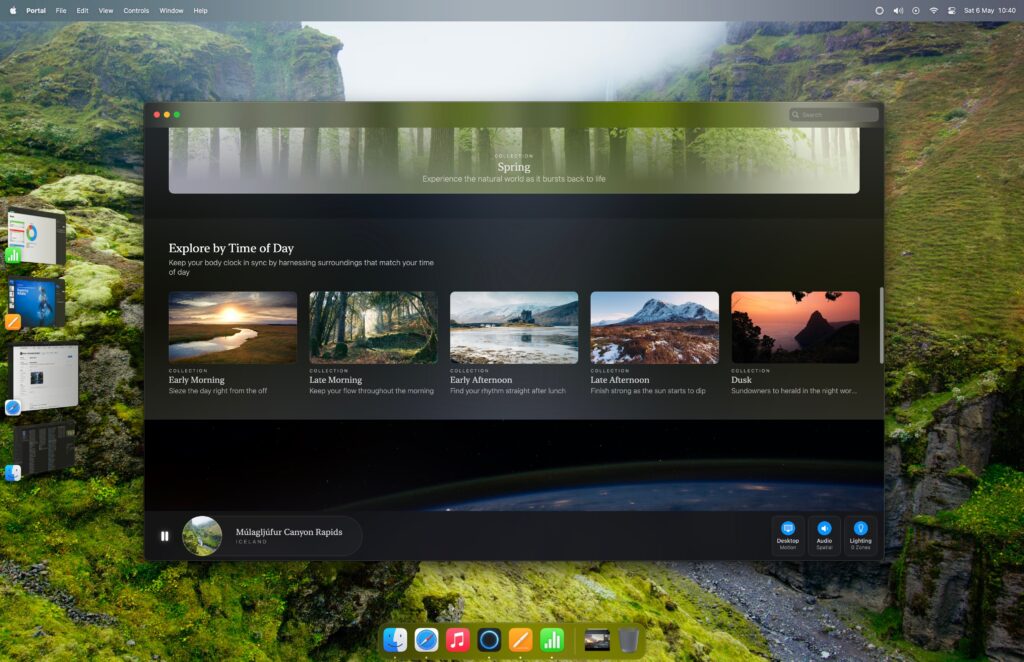
Ha, inspiration literally hit you. So the initial version was mostly focused on sleep and relaxation?
Yes, not many people know this, but the app actually started off life completely focused on being a sleep aid and natural alarm clock — recreating that camping experience in the bedroom using immersive sound, smart lighting and visuals.
The big idea was to take an experience-led approach to designing an alarm clock that was inspired by our trip, so rather than the purely functional approaches to alarm clocks which basically use loud noises to scare you awake at a specific time — it would help you wind down at night using gentle transitions mimicking the natural world and then wake you up gently in the morning.
It’s an approach that draws upon a lot of the principles behind Biophilic Design, a design approach traditionally used by architects and interior designers that looks to increase people’s connectivity to natural environments and the benefits this can bring. It’s still quite a niche approach but I’m convinced given the amount of research and the positive impact it can bring in our lives that you’ll see it becoming much more mainstream over the coming years.
You’ve just launched the Mac version of the app, which is all about improving focus and productivity. How did this come about?
In truth, it was a little bit Inception-like. I’d have the scenes playing a lot while coding and developing the app in the early days and came to realize that it was actually really helping me to concentrate and get into the flow. The thunderstorms especially were game-changing for me!
As I dug a little deeper, I discovered a wealth of research has come out over recent years shining light on the attention-enhancing effects of nature exposure both digitally and in the real world, specifically research around Attention Restoration Theory (ART) in the field of environmental psychology.
There’s also a lot more investment and research going into the architecture and design of physical work spaces and buildings and how they can influence wellbeing, productivity and creativity using the principles of Biophilic Design mentioned before.
Apple Park is probably the best example of this that I’ve come across where they’ve spent billions of dollars creating a physical work environment that takes a very human-centric approach and really does aim to bring the natural outdoor environment indoors as much as physically possible.
Another fascinating insight we found when speaking with existing customers who were using the iOS app to help them focus was that 40% of those who we interviewed were diagnosed with ADHD (which normally occurs in around 5% of the population). They reported that Portal had become an essential part of their toolkit in managing their ADHD and helping them pursue their studies, careers and passions.
However, despite this, the biggest concern for our customers was actually having to use Portal on their phones as these had increasingly become the greatest source of distraction in their lives. They were a big driving force for us prioritizing bringing Portal to Mac.
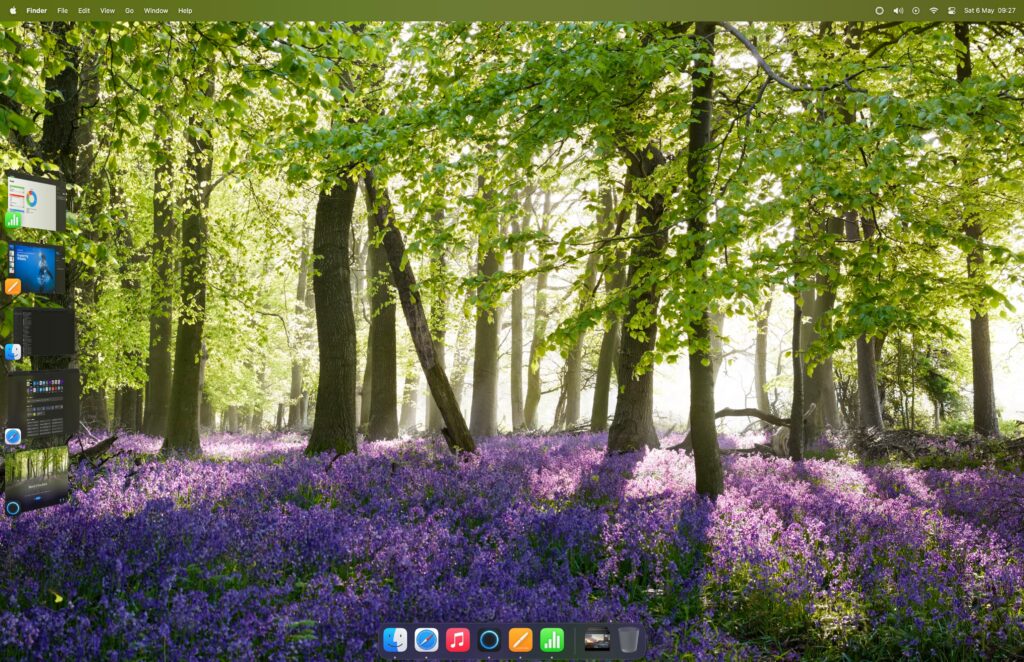
This is such an ambitious idea. How does Portal work, exactly?
The app itself uses immersive technologies to instantly transform your workspace into an environment that’s designed to aid focus and creativity.
Most of us are very aware of how different places make us feel — it’s not hard to imagine how different you’d feel if you were sitting on top of a mountain right now, or in the midst of a beautiful ancient woodland or a stunning tropical beach. But what’s often less obvious is that how we feel emotionally has a very direct impact on our thought process and how we actually think.
In the words of one of our customers: “It has not only made me more productive, but more importantly, it has brought a sense of joy to my work day.”
We essentially tap into the psychology of how we respond to our environment and draw on inspiration from some of the world’s most peaceful and awe-inspiring surroundings to create environments that are attuned to helping us get into the right state of mind to think, focus and create. The beauty of this approach is that it’s very passive — it doesn’t take active effort to enjoy the benefits.
How does Portal work under the hood?
Our ultimate goal is to re-create environments in the most true-to-life and authentic way possible, while also making it as practical and easy to use as possible. To do this, we’ve really had to really push the use of technologies that allow us to capture and reproduce visuals, sound and lighting as realistically as possible.
Firstly we use the visuals of the location to create the feeling of a “window” to that place. Our aim has been to get as close to the feeling of a real window as possible and with Mac we’ve integrated these motion visuals directly onto the desktop.
It may seem pretty counterintuitive that putting motion onto your desktop would actually help with concentration and make you less distracted, but when done right it can be really effective and it has a very similar effect to having a real window in your office.
We’ve meticulously captured over 80 portals ourselves in some of the most beautiful and peaceful corners of the world. We’ve used 12K digital cinema cameras and an evidence-based approach to our content production to ensure we capture the feeling and detail of these incredible places in a way that can enhance productivity and inspire creativity without pulling your focus away.
The second component is the sound. We’ve again put an enormous amount of focus on recreating the most true-to-life and immersive sound experience possible.
To do this we not only use state-of-the-art spatial audio microphones but we’ve developed our own Spatial Audio solution from the ground up which is specifically designed for real-life ambiance. Rather than using Dolby Atmos which is the default technology on iOS and Mac we use a technology called Ambisonics which is most often used in VR and represents the soundfield as a sphere rather than the traditional speaker or channel-based sound formats.
Spatial audio better reflects how we actually hear our surroundings in real life, giving a much greater sense of space and delivering the closest experience to actually being there yourself. The effect can be quite subtle, but it’s incredible just how much our subconscious picks up on.
We also go to great lengths to capture sound in the field that’s naturally free of noise pollution. It’s amazing how pervasive noise pollution is these days and finding locations where you can’t hear the distant hum of aircraft flying overhead or roads in the distance is surprisingly difficult. This often means we have to film in remote locations at very early times in the mornings before the world has woken up and pay special attention to flight paths and human activity.
The final component is lighting and if you have smart lights in your office, you can sync the scenes with your lights to really bring the feeling of being there into your room. We aim to match the color temperature of the scenes, and this can change significantly depending on the time of day of the scene. This can be surprisingly impactful and definitely brings another level to the immersion and feels quite magical as you switch through the scenes.
Portal is based on the theory of environmental wellbeing. Can you tell us more?
Environmental wellbeing is a theory we’ve been developing using everything we’ve learned from the design process along with the latest understanding from science to help guide the product but also our long-term strategy.
The basic idea is that different elements of our surroundings impact us at different times. The biggest impact moment to moment are our direct surroundings — the spaces we live and work in and these are also the ones that are also most under our control.
There’s then the broader neighborhoods where we live which have more of a long-term effect on our health and how we feel and access to green space and nature can have a really big impact here. These affect our day to day but also “leak” into our direct surroundings — for example, if we live in cities, noise pollution from planes and roads can be a big issue.
The final layer is then the global environment. This is the one we often feel most removed from but still has a large ongoing impact on how we think and feel and with climate change, these effects are becoming more and more pronounced.
The idea is that as these environments expand out, we have less and less individual control over them, and the costs and timescales to change them grow exponentially.
With Portal, we’re really focusing on building tools to help you take control of your direct surroundings, and by doing this digitally, we can also start to build awareness and connection to that broader global environment.
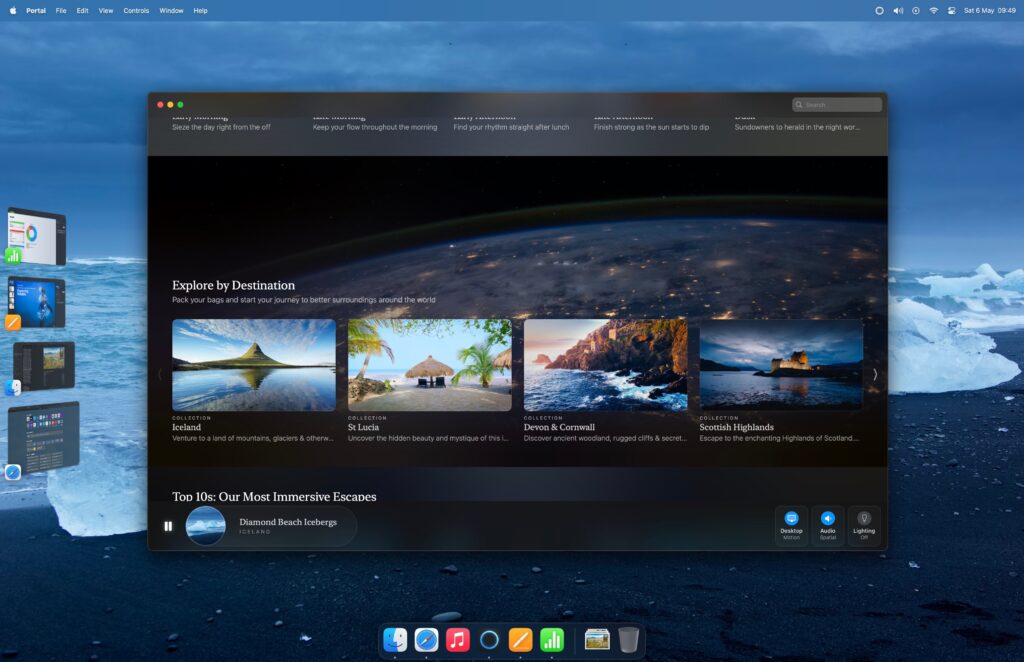
With access to several other devices such as smart lights and TV, how do you ensure users’ peace of mind when it comes to their privacy?
We’ve taken a very strong stance on privacy and Portal is private by design. It’s both been a decision that fits with our values as a team and our customers, but we also felt it was a really important part of the experience itself — how can you truly relax or escape if you have any inkling that you’re being watched or tracked?
So we don’t include any analytics or tracking in the app whatsoever, and there are no user accounts required to use the app, so we don’t know who you are.
We don’t feel our product development process has suffered from this lack of analytics or data either. If anything, it encourages us to go out and talk to our customers if we really want to find out about the usage of a certain feature which gives us much more insight into the reasons behind the behavior.
If you want to find out more Andy, our Head of Technology, wrote a detailed article about the reasoning behind our privacy approach.
What kind of people use Portal?
On iOS we have an amazingly broad spectrum of customers using it for a variety of use cases — from air ambulance pilots recharging between callouts, relaxation during childbirth, parents struggling with sleep, end-of-life care, tinnitus, stress & anxiety relief and we even have non-human customers with anxious dogs and cats (turns out nature relaxes across species!)
For Mac it’s much more focused on productivity, and we have a lot of students, knowledge workers, and especially creative and tech workers, and we have a lot of people reporting ADHD too.
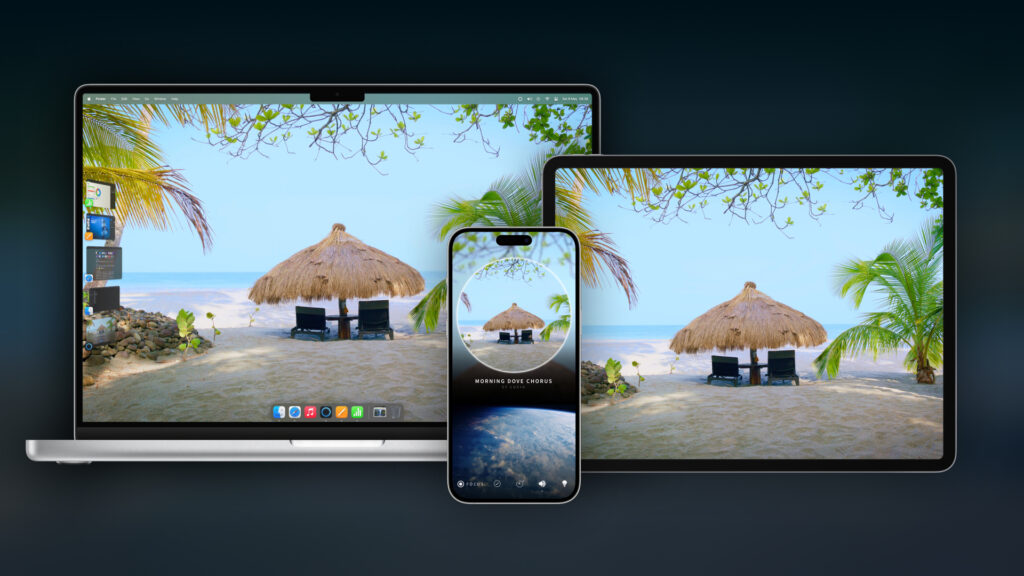
Two examples of customers who come to mind are both knowledge workers in the tech space. One has ADHD and works in less-than-ideal surroundings (shares a living/office space with his wife who also works from home) and really struggles to find focus. They use Portal as a way to create a much more productive environment in a less-than-ideal space.
The other is a productivity aficionado, who has a really amazing workspace already but sees Portal as a gateway to helping them perform at their best and take things to the next level.
What about you, how do you use Portal?
My usage of Portal has actually changed quite a bit over time. I started off using the sleep and wake-up alarm a lot, but since we’ve had kids, I’ve used the alarm a lot less as they do that job on their own schedule!
My main use case is now for focus and creativity and I use it an awful lot during my day. As mentioned, Portal has definitely helped build itself in a weird Inception-like way! My go-to for creative work are the thunderstorms and I often use these on their own but sometimes pair them with cinematic soundtracks or music.
It was properly stress tested during the pandemic, before we moved out of London, as we had 2 kids and 2 adults working full time in a 2 bed flat and I was often working from the living room surrounded by utter chaos but was able to stay really focused by using Portal to mask the noise and transform the space. It provided me a haven from both the physical and mental distractions that were all around me. These days I also use it for meditation at times when I can’t get outdoors.
How do you recommend someone get started?
The good thing about Portal is that unlike a lot of productivity or habit-forming practices it really doesn’t take any active effort and so doesn’t contribute to any cognitive fatigue — just stick it on and it’ll do a lot of the work for you in the background.
The best way to give it a try is with a few focused sessions for a day and get a feel of what works for you. People are often quite surprised at how effective it can be even after a few minutes or work.
We’ve also put a lot of work into categorizing the library by use case as well as by location and time of day, with recommendations that are guided by scientific research. This should really help with the initial discovery and exploration of the library.
If you’re used to working with music it can also be really amazing to play music alongside the ambience. I love film soundtracks for this but you’d be surprised how well some of these pairings can work.
I’d also definitely recommend trying it on Mac with a large screen for the visuals — it’s counterintuitive, but having subtle and non-distracting movement of nature on your desktop can be game-changing.
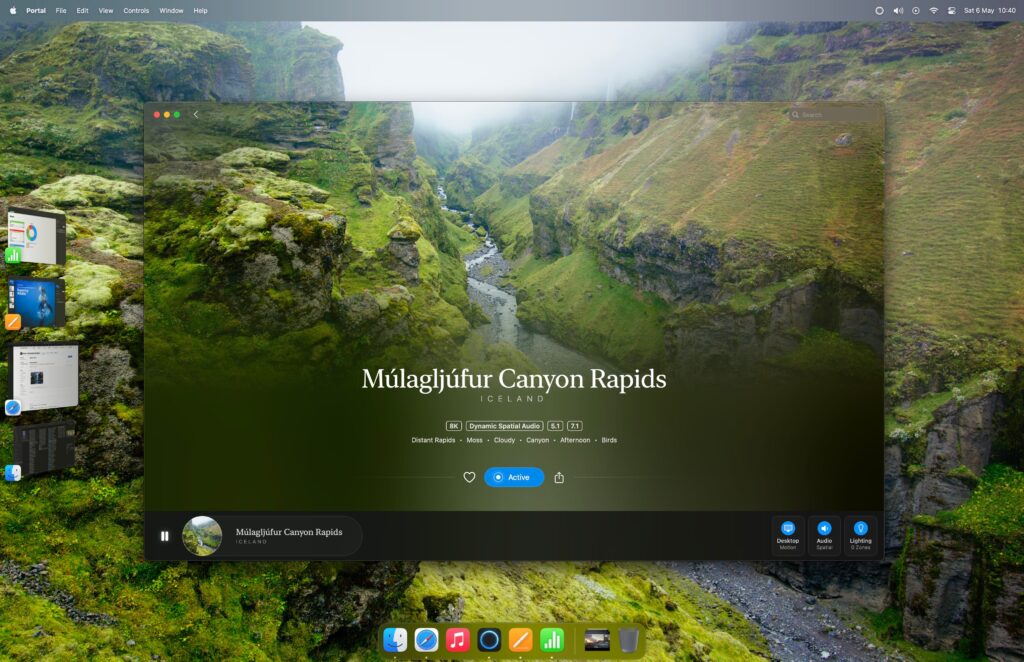
And finally… What’s next for Portal?
Excitingly, there’s an enormous amount still in the pipeline! In the short term, we’re going to be focusing on expanding the Mac experience and continuing to build up the locations and content within the app to add further depth and variety.
Drawing on my experience camping but also insights from the latest research, we’re very keen to start to bring in content that changes depending on the time of day and seasons and there are a lot of quite difficult technical challenges we need to solve here that we’re starting to work on.
And of course, Apple TV and the Vision Pro are both incredible platforms for the Portal experience and we’re excited to see what might be possible and the positive impact that Portal might be able to make in people’s day-to-day lives here.
In the long term, we hope to further raise awareness around the impact that the environments we live and work in have on our minds and hopefully help inspire change beyond digital experiences and into the real world.
Thank you so much for your time, Nick! Where can people learn more about Portal?
You can learn more about the app on our website and follow our journey on Instagram and Twitter.
